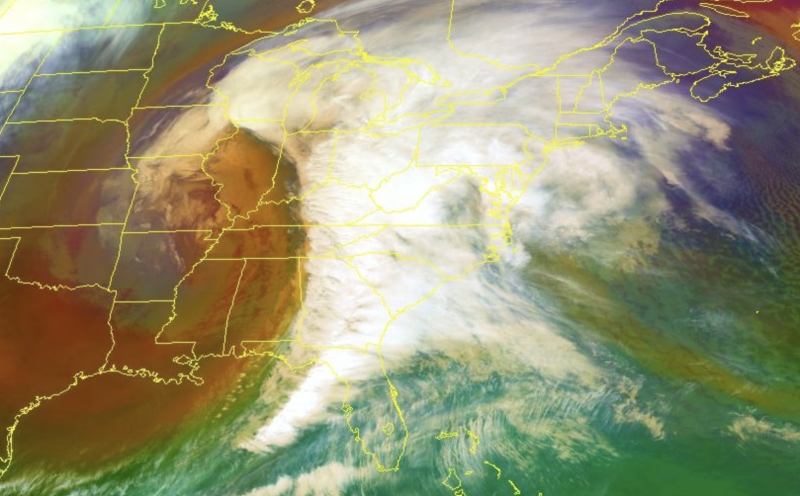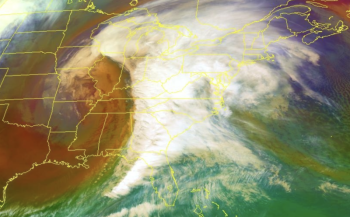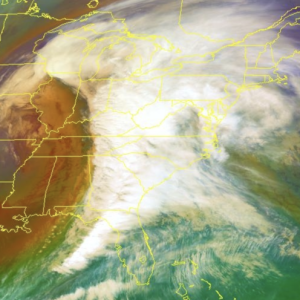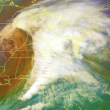Coastal Maine to get a strong punch from an overnight storm: Gale force winds, rain, snow
Load the flashlights with fresh batteries, bring in wood, fill the tub with water, and prep the generator if you have one. Another powerful storm is heading toward the Midcoast, and by now, we should know the drill. Central Maine Power is gearing up for possible power outages, and local fire departments and public works are likewise doing the same.
Trees are bound to come down if the winds, forecast to come out of the southeast, gust up to 60, even 70, mph, as the National Weather Service anticipates.
“A significant, multi-faceted storm impacts the region tonight through Wednesday,” said the National Weather Service, in its Gray office. “Strong winds and heavy rain and snow are expected, with snow starting during the evening hours, and then transitioning to rain overnight. Coastal flooding impacts are
also possible, but will depend on the timing of the strongest winds in relation to the Wednesday morning high tide cycle. Relatively quiet weather returns to close out the work week. Another strong storm system will cross the region this weekend. Colder weather returns late this weekend and early next week.”
As the forecast goes, the storm arrives in the middle of the night, with rain and snow, becoming all rain after 3 a.m. Temperature are to rise to around 40 by 5 a.m.
The southeast wind will blow 15 to 25 mph, increasing to 30 to 40 mph after midnight. Winds could gust as high as 60 mph. Chance of precipitation is 100%.
The rain continues through Wednesday morning, as temperatures are to climb to near 47, and the winds start kicking around to the southwest, still blowing 20 to 30 mph.
But, the NWS said, “Winds could gust as high as 70 mph.”
In the Midcoast, there are warnings for flood conditions, high wind and winter weather. The Maine Emergency Management Agency and NWS said: “heavy rain combined with snowmelt, frozen ground, and snow-clogged drains will cause urban and small stream flooding. Minor river flooding may also occur, especially south of the mountains. Damaging winds of 40-65 mph are possible, with the highest gusts along the coast and the Western Maine Mountains. Power outages are likely. Minor to moderate coastal flooding is possible during the Wednesday morning high tide. Significant beach erosion and splashover is also probable.”
If you must evacuate or are traveling during flooding, remember:
Do not walk through flowing water. Most drownings occur during flash floods.
“Turn Around, Don't Drown!” Don't drive through flooded roads.
Do not drive around road barriers.
To prepare for a power outage
Take an inventory of the items you need that rely on electricity.
Charge cell phones and devices now.
Plan for batteries and other alternative power sources to meet your needs, such as a portable charger or power bank.
Have flashlights for every household member.
Have enough nonperishable food and water for each household member and pets for at least 72 hours.
Review your family communication plan with every household member.
If you use an alternate power source
Using portable gas-powered generators can quickly cause carbon monoxide (CO) poisoning when they are run in enclosed or partially enclosed spaces. CO is a colorless, odorless gas formed when burning most types of fuels.
Place your generator outdoors. Keep your generator at least 20 feet from windows and doors. Do not put a generator in a closed or partly closed space, like a basement, cellar bulkhead, garage, or porch, even if doors and windows are open.
Follow the safety instructions for operating your portable generator.
Do not use outdoor cooking devices indoors like gas or charcoal grills and gas camp stoves.
Place a battery-operated carbon monoxide detector near each sleeping area in your home. Look for the Underwriters Laboratory "UL certification" marked with the "Station Carbon Monoxide Alarm" statement.
Check CO detectors regularly to be sure they are functioning properly.
Warning signs of CO poisoning are similar to flu symptoms that include headache, nausea, vomiting, chest pain, dizziness, drowsiness, confusion or altered mental status.
If carbon monoxide poisoning is suspected, leave the house at once, call 9-1-1, and do not go back into the building until the fire department tells you it is safe.
After power and other utilities have been restored, you might face the issue of what to do with storm-damaged trees. Maine Forest Service offers tips and helpful guidance for those faced with questions about what to do with downed trees, limbs, and branches.
For further tips or resources on heating during the winter months, visit the Governor’s Energy Office’s Winter Heating Guide.
Warming and Charging Centers operated by municipalities and local organizations may open in communities across Maine. Please visit MEMA’s website to find the nearest location: https://www.maine.gov/mema/response-recovery/mass-care. You may also dial 2-1-1 or visit the website for a list of locations.
Mainers are encouraged to stay tuned to alerts and warnings through media or by downloading the free FEMA app on their smart phone, which provides targeted preparedness information, alerts and warnings for specific areas. For timely safety and preparedness information, find MEMA on Facebook or X or visit www.Maine.gov/MEMA.
























